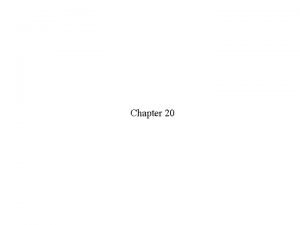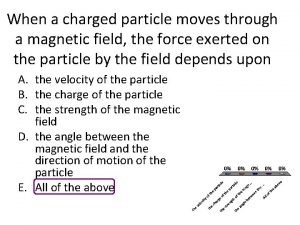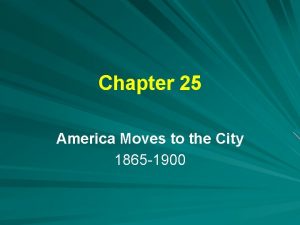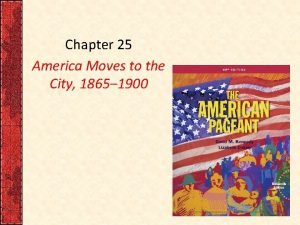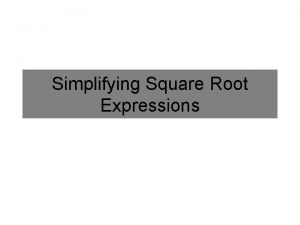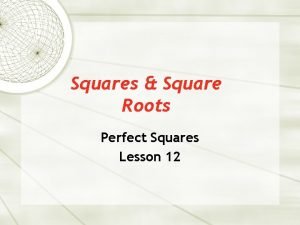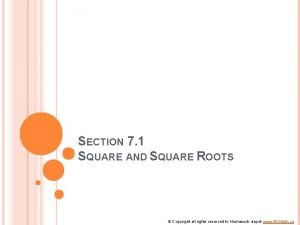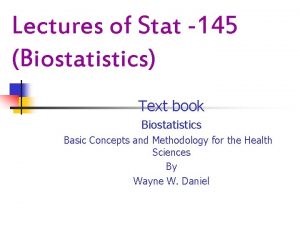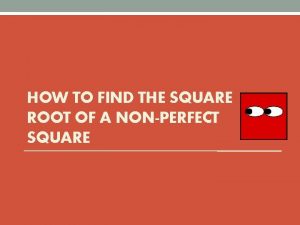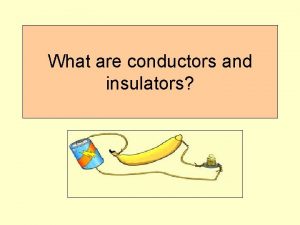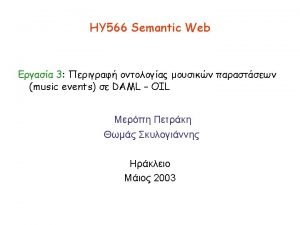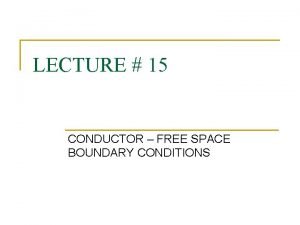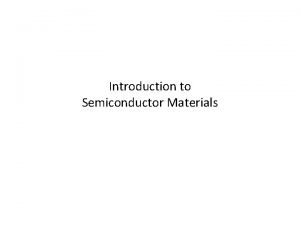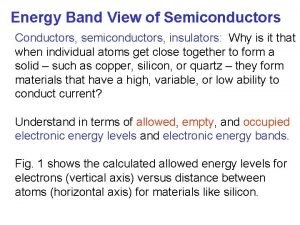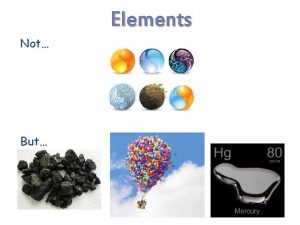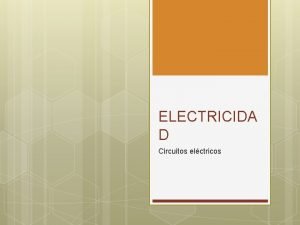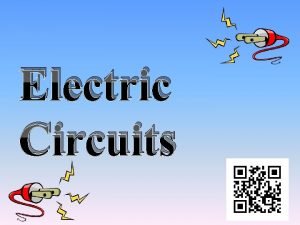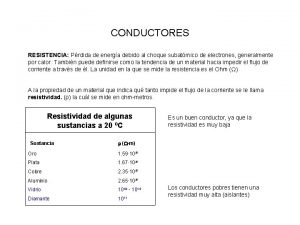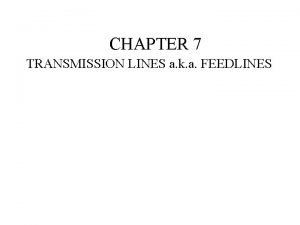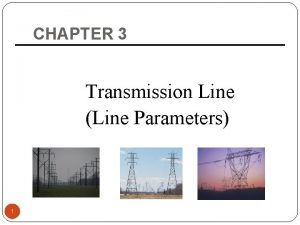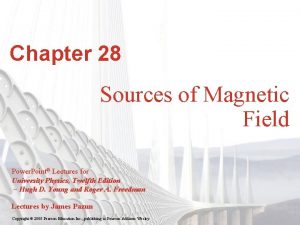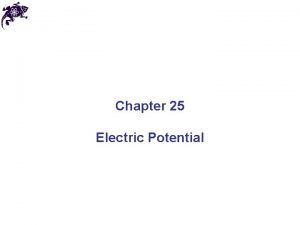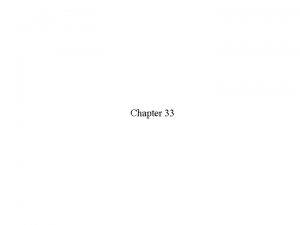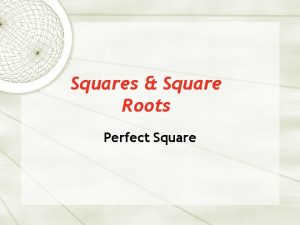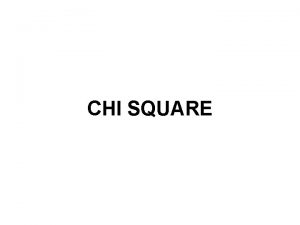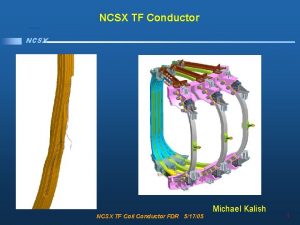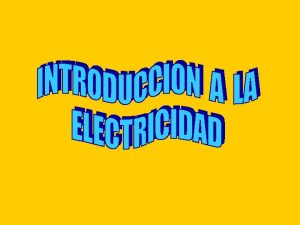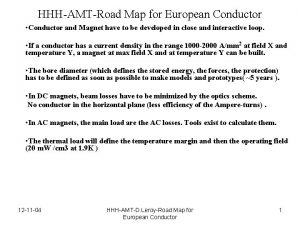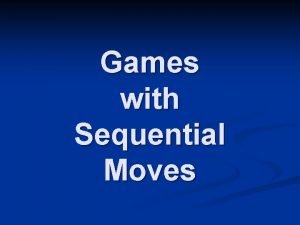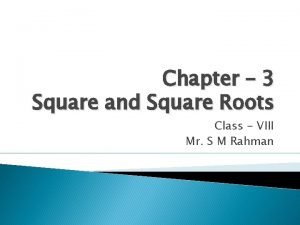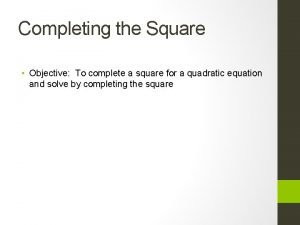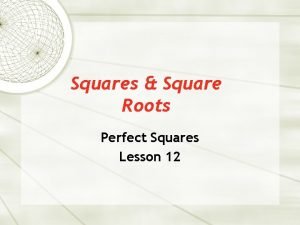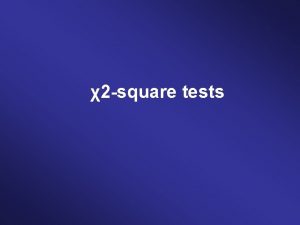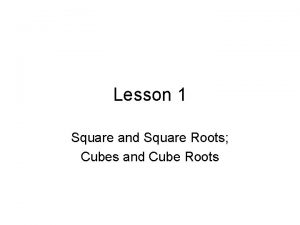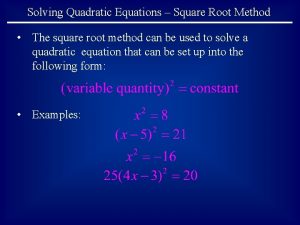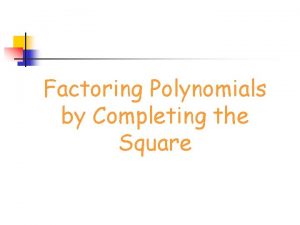Chapter 20 A square conductor moves through a

































- Slides: 33

Chapter 20

A square conductor moves through a uniform magnetic field. Which of the figures shows the correct charge distribution on the conductor?

A square conductor moves through a uniform magnetic field. Which of the figures shows the correct charge distribution on the conductor?

Is there an induced current in this circuit? If so, what is its direction? A. Yes, clockwise B. Yes, counterclockwise C. No

Is there an induced current in this circuit? If so, what is its direction? A. Yes, clockwise B. Yes, counterclockwise C. No

A square loop of copper wire is pulled through a region of magnetic field. Rank in order, from strongest to weakest, the pulling forces that must be applied to keep the loop moving at constant speed. A. B. C. D. E. F 2 = F 4 > F 1 = F 3 > F 2 = F 4 > F 1 F 3 > F 4 > F 2 > F 1 = F 3 F 4 > F 3 > F 2 > F 1

A square loop of copper wire is pulled through a region of magnetic field. Rank in order, from strongest to weakest, the pulling forces that must be applied to keep the loop moving at constant speed. A. B. C. D. E. F 2 = F 4 > F 1 = F 3 > F 2 = F 4 > F 1 F 3 > F 4 > F 2 > F 1 = F 3 F 4 > F 3 > F 2 > F 1

A current-carrying wire is pulled away from a conducting loop in the direction shown. As the wire is moving, is there a cw current around the loop, a ccw current or no current? A. There is a clockwise current around the loop. B. There is a counterclockwise current around the loop. C. There is no current around the loop.

A current-carrying wire is pulled away from a conducting loop in the direction shown. As the wire is moving, is there a cw current around the loop, a ccw current or no current? A. There is a clockwise current around the loop. B. There is a counterclockwise current around the loop. C. There is no current around the loop.

A conducting loop is halfway into a magnetic field. Suppose the magnetic field begins to increase rapidly in strength. What happens to the loop? A. The loop is pushed upward, toward the top of the page. B. The loop is pushed downward, toward the bottom of the page. C. The loop is pulled to the left, into the magnetic field. D. The loop is pushed to the right, out of the magnetic field. E. The tension is the wires increases but the loop does not move.

A conducting loop is halfway into a magnetic field. Suppose the magnetic field begins to increase rapidly in strength. What happens to the loop? A. The loop is pushed upward, toward the top of the page. B. The loop is pushed downward, toward the bottom of the page. C. The loop is pulled to the left, into the magnetic field. D. The loop is pushed to the right, out of the magnetic field. E. The tension is the wires increases but the loop does not move.

The potential at a is higher than the potential at b. Which of the following statements about the inductor current I could be true? A. B. C. D. E. I flows from a to b and is steady. I flows from a to b and is decreasing. I flows from b to a and is steady. I flows from b to a and is increasing. I flows from a to b and is increasing.

The potential at a is higher than the potential at b. Which of the following statements about the inductor current I could be true? A. B. C. D. E. I flows from a to b and is steady. I flows from a to b and is decreasing. I flows from b to a and is steady. I flows from b to a and is increasing. I flows from a to b and is increasing.

What is the direction of the net force on the moving charge? A. Into the page B. Out of the page C. Left D. Right E. Up and left at 45°

What is the direction of the net force on the moving charge? A. Into the page B. Out of the page C. Left D. Right E. Up and left at 45°

Which diagram shows the fields in frame S´?

Which diagram shows the fields in frame S´?

The electric field in four identical capacitors is shown as a function of time. Rank in order, from largest to smallest, the magnetic field strength at the outer edge of the capacitor at time T. A. B. C. D. E. Ba = Bb > Bc = Bd Ba > Bb > Bc > Bd Ba = Ba > Bc > Bd Bc > Ba > Bd > Bb Bd > Bc > Ba = Bb

The electric field in four identical capacitors is shown as a function of time. Rank in order, from largest to smallest, the magnetic field strength at the outer edge of the capacitor at time T. A. B. C. D. E. Ba = Bb > Bc = Bd Ba > Bb > Bc > Bd Ba = Ba > Bc > Bd Bc > Ba > Bd > Bb Bd > Bc > Ba = Bb

An electromagnetic wave is propagating in the positive x-direction. At this instant of time, what is the direction of at the center of the rectangle? A. In the positive x-direction B. In the negative x-direction C. In the positive y-direction D. In the positive z-direction E. In the negative z-direction

An electromagnetic wave is propagating in the positive x-direction. At this instant of time, what is the direction of at the center of the rectangle? A. In the positive x-direction B. In the negative x-direction C. In the positive y-direction D. In the positive z-direction E. In the negative z-direction

An electromagnetic wave is traveling in the positive y-direction. The electric field at one instant of time is shown at one position. The magnetic field at this position points A. In the positive x-direction. B. In the negative x-direction. C. In the positive y-direction. D. In the negative y-direction. E. Away from the origin.

An electromagnetic wave is traveling in the positive y-direction. The electric field at one instant of time is shown at one position. The magnetic field at this position points A. In the positive x-direction. B. In the negative x-direction. C. In the positive y-direction. D. In the negative y-direction. E. Away from the origin.

Currents circulate in a piece of metal that is pulled through a magnetic field. What are these currents called? A. Induced currents B. Displacement currents C. Faraday’s currents D. Eddy currents E. This topic is not covered in Chapter 33.

Currents circulate in a piece of metal that is pulled through a magnetic field. What are these currents called? A. Induced currents B. Displacement currents C. Faraday’s currents D. Eddy currents E. This topic is not covered in Chapter 33.

Electromagnetic induction was discovered by A. Faraday. B. Henry. C. Maxwell. D. Both Faraday and Henry. E. All three.

Electromagnetic induction was discovered by A. Faraday. B. Henry. C. Maxwell. D. Both Faraday and Henry. E. All three.

The direction that an induced current flows in a circuit is given by A. Faraday’s law. B. Lenz’s law. C. Henry’s law. D. Hertz’s law. E. Maxwell’s law.

The direction that an induced current flows in a circuit is given by A. Faraday’s law. B. Lenz’s law. C. Henry’s law. D. Hertz’s law. E. Maxwell’s law.

The amplitude of the oscillating electric field at your cell phone is 4. 0 µV/m when you are 10 km east of the broadcast antenna. What is the electric field amplitude when you are 20 km east of the antenna? A. 1. 0 µV/m B. 2. 0 µV/m C. 4. 0 µV/m D. There’s not enough information to tell.

The amplitude of the oscillating electric field at your cell phone is 4. 0 µV/m when you are 10 km east of the broadcast antenna. What is the electric field amplitude when you are 20 km east of the antenna? A. 1. 0 µV/m B. 2. 0 µV/m C. 4. 0 µV/m D. There’s not enough information to tell.

Experimenter A creates a magnetic field in the laboratory. Experimenter B moves relative to A. Experimenter B sees A. just the same magnetic field. B. a magnetic field of different strength. C. a magnetic field pointing the opposite direction. D. just an electric field. E. both a magnetic and an electric field.

Experimenter A creates a magnetic field in the laboratory. Experimenter B moves relative to A. Experimenter B sees A. just the same magnetic field. B. a magnetic field of different strength. C. a magnetic field pointing the opposite direction. D. just an electric field. E. both a magnetic and an electric field.
 A conducting loop is halfway into a magnetic field
A conducting loop is halfway into a magnetic field Magnetic
Magnetic America moves toward war
America moves toward war Chapter 24 section 4 america moves toward war
Chapter 24 section 4 america moves toward war Chapter 25 america moves to the city
Chapter 25 america moves to the city Chapter 25 america moves to the city
Chapter 25 america moves to the city Chapter 25 america moves to the city
Chapter 25 america moves to the city Through one man
Through one man Furcation involvement
Furcation involvement Conversion of timber advantages and disadvantages
Conversion of timber advantages and disadvantages Nissim ezekiel night of the scorpion
Nissim ezekiel night of the scorpion Simplify square root expressions
Simplify square root expressions How to do the foil method in biology
How to do the foil method in biology Square numbers up to 12
Square numbers up to 12 Square and square root from 1 to 20
Square and square root from 1 to 20 Square root
Square root Biostatistics examples
Biostatistics examples Is 72 a perfect square
Is 72 a perfect square Insulator of electricity
Insulator of electricity What are conductors
What are conductors Orchestra conductor name
Orchestra conductor name Boundary conditions between conductor and free space
Boundary conditions between conductor and free space Use of half wave rectifier in daily life
Use of half wave rectifier in daily life Energy band in conductor semiconductor and insulator
Energy band in conductor semiconductor and insulator What element is the best conductor of electricity
What element is the best conductor of electricity Un alambre es mejor conductor cuanto menor sea su
Un alambre es mejor conductor cuanto menor sea su Electric potential due to dipole
Electric potential due to dipole Parallel circuit examples
Parallel circuit examples Cual es el mejor conductor
Cual es el mejor conductor What is parallel-conductor feed line?
What is parallel-conductor feed line? The bundle gmr dsl of bundle conductor
The bundle gmr dsl of bundle conductor Conductor in a magnetic field
Conductor in a magnetic field Potential of conductor
Potential of conductor Grounded conductor color
Grounded conductor color
